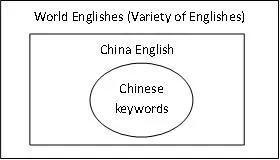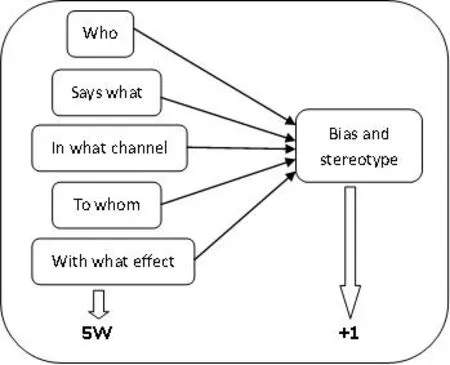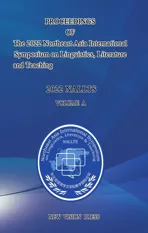A NEW“5W+1”COMMUNICATION MODEL TO TRANSLATE CHINESE KEYWORDS TO ENHANCE INTERNATIONAL COMMUNICATION
2023-01-16JiaChen
Jia Chen
Guangdong University of Foreign Studies (South China Business College), Guangzhou, China
Email: chenjiawolf@163.com
[Abstract] Translation of Chinese keywords are considered very important as these words and expressions are the showcase of Chinese modern society, and they form the image of modern China. In the complex international situation, inappropriate translation of these words may cause misunderstanding and cannot enhance international communication. In this case, based on Lasswell’s 5W communication model, this essay tries to develop a new model, “5W+1” communication model, to analyze the C-E translation of Chinese keywords in order to enhance international communication.
[Keywords] Chinese keywords; translation; 5W+1; communication model; Lasswell; international communication
Introduction
Chinese keywords are new words and expressions that are used to describe recent events, new objects, and latest phenomenon in China, and therefore, have been the symbol and representation of modern Chinese. With China’s growing international influence, most of these keywords have been translated into English and many other languages by the media at home and abroad, and have been known to the world. However, the translated Chinese keywords sometimes do not seem accurate or appropriate enough due to the rich cultural content lies underneath a certain expression. Inaccurate or inappropriate English translation may cause misunderstanding, therefore proper translation to Chinese keywords plays an important role to enhance international communication. This essay tries to discuss the translation of Chinese keywords from a new “5W+1” communication model.
This idea is developed from Lasswell’s 5W communication model. From the CNKI database, 5W communication model is often discussed by scholars who studies communication strategies of a certain TV show (Yang, 2022), a specific Chinese local tourist attraction (Wang and Liang, 2022), or intangible cultural heritage (Liu, Jiang & Tan, 2022). Some other scholars also try to discuss 5W communication model in the field of C-E translation. For example, Chang (2021) analyzes the C-E translation of Chinese classic novel, Journey to the West, and Ma (2022) discusses the translation of Hua Tuo Five Animal Show (a traditional aerobic dance) through 5W model. In short, all the previous studies seem limited to using Lasswell’s 5W communication model to analyze either communication strategies or translation of traditional literature and culture, instead of using it to explore translation of new expressions (or Chinese keywords) from the media.
Defining Chinese Keywords
The term of Chinese keywords in this paper is a broad concept. It not only includes the expressions in Keywords to Understand China series (CIPG, ACCWS, & CATL, 2020), but also includes other new words and expressions that have typical Chinese feature and can be found in the media. Thus, these Chinese keywords reflect what are happening nowadays in China from various aspects and fields. Since these expressions come from the people in modern China and are created by the Chinese people, it seems reasonable that only the Chinese people have the authority to define and explain the real meaning of these Chinese keywords.
However, when it comes to the English translation of Chinese keywords, some might argue that the authority of translation might not be the Chinese people because the English they use might not be the “standard”. But this idea is not correspondent to the natural development of English language. It is generally believed that, because of international communication nowadays, English has developed to the stage of World Englishes, or Variety of Englishes. In this stage, English is no longer owned by the so-called native English speakers, but belongs to the world (Dai & Sun, 2014). In this stage, China, as one of the countries that communicates with other countries in English, also develops its own type of English, which is often termed as China English. As a variety of World Englishes, China English is different from Chinglish (mistakes made by Chinese speakers), and is a type of English with Chinese feature (Hu, 2012). In this case, it can be deduced that Chinese keywords are a part of China English as Figure 1 shows, since they are expressions with Chinese feature.

Figure 1: The relationship between Chinese keywords, China English and World Englishes

Figure 2: The “5W+1” Communication Model
Therefore, when translating Chinese keywords into English (especially when the media at home and abroad try to report new things and events that are happening in China), it is also reasonable that the Chinese people who know about the real concept of these words should be the authority of the English translated version. If these Chinese keywords are translated by someone who know little about China, the English translation may cause misunderstanding and cannot enhance communication. The following chapters will try to develop a new “5W+1” communication model to analyze the translation of Chinese keywords.
Theoretical Basis: 5W Communication Model
As one of the most popular communication model, Lasswell’s (1948) 5W model detailedly describes the five basic elements in social communication. He believes that communication in society should consider “who”, “says what”, “in what channel”, “to whom”, and “with what effect”, namely the 5W model of communication. “Who” is considered as the communication subject responsible to information collection, editing, and transmitting. “Says what” refers to the content of communication, while “in what channel” is the media for communication including the mass media and new emerging media. “To whom” is the element that involves the most people as it is the final destination of communication. Finally, “with what effect” refers to the responses of the people after communication. Such responses, as Lasswell points out, are the criteria to judge whether the communication is successful or not.
Lasswell’s idea is soon approved by many other scholars in the field of cross-culture communication. As successful translation is one of the most important ways to enhance communication in different culture, Bao (2014) revisits the 5W model and discusses the five elements in the field of Chinese literature translation. She believes that, in translation, “who” refers to the translator, and that the background of the translator may influence the effect of communication. When using 5W communication model to analyze Guofan Yu’s translated version of Journal to the West, Chang (2022) also mentions that the identity of the translator as a Chinese American has “acquaintances effect”, and that this effect raises a sense of intimacy amount readers of the target language and therefore plays a positive role in making the translated Chinese novel more acceptable and popular for the American target language market. “Says what” includes the translation content and strategies. Bao (2014) believes that the choice of source text and of translation strategy reflect the translator’s subjective ideas, and therefore plays an important role in successful communication of the translated version. The “in what channel” element is how the C-E translated version of the literature goes into the target language market, and “to whom” refers to all the readers of the C-E translated literature. The last element, “with what effect”, is the criteria to examine whether this translated version can successfully enhance communication in the target language market or not. In other words, C-E translation of Chinese literature may focus more on the target language market. Thus in most cases, the sales of the book in the target language market is usually taken into consideration when judging whether the translated version can communicate successfully.
Scaffolding a new “5W+1” Communication Model
However, translating Chinese keywords is different from translating Chinese literature which mainly focuses on the sales of the target language market. Moreover, literature translation takes time for translators to choose the most appropriate expression, but Chinese keywords translation seldom takes such a long time. As mentioned before, Chinese keywords, which often describe new things that happen in China, frequently appear in the mass media as news reports. Because of the immediate feature of news reports, most journalists do not have enough time to think of a proper English translation of the newly appeared expression. For those journalists who know little about China, their English translation of Chinese keywords might sometimes convey inaccurate information. Worse still, if the journalist have stereotype or even bias towards China, their translation can be incorrect. In this case, when judging whether the Chinese keywords translation can enhance communication or not, 5W communication model is not enough.
Apart from the 5W elements, this essay believes that one more element (“+1”) should also be taken into consideration, that is people’s bias and stereotype, namely “5W+1”. By adding “+1” in the new communication model, the focus of C-E translation of Chinese is not only on the effect of the communication in the target language market, but also on the bias and stereotype (“+1”) as well. In other words, the “5W+1” communication model of translating Chinese keywords pays attention to whether the communication can convey an accurate Chinese image to the world or not. As Figure 2 shows, “5W” is parallel to “+1”, because they are equally important in Chinese keywords translation. In this model, the implied meanings of “5W” is slightly different from those in Bao’s (2014). When discussing the “5W” elements, “+1” should always be taken into consideration, since bias and stereotype can affect all the “5W” elements. The first element, “who”, in the “5W+1” model refers to people who need to translate Chinese keywords on the media. If they have bias towards China, their attitudes towards the keywords might be negative and hinder successful communication. Second, “says what” refers to the choice of words in the process of translating a certain term of Chinese keywords. If translators have some bias or stereotype, their choices might be inappropriate. The third element, “in what channel”, refers to the media that reports on events that happened in China. This element is also related to bias and stereotype, because different standpoints of various media plays a role on successful communication. The “to whom” and “with what effect” elements refer to the readers’ identity and their responses respectively. Readers’ bias and stereotype are related to their identity and can be reflected from their responses, and therefore can also influence effective communication. Thus, in the “5W+1” communication model, both “5W” and “+1” are important. The following chapters will try to use some examples of Chinese keywords translation to illustrate, by divided the Chinese keywords into three categories, namely keywords related to social life, culture, and technology.
Analysis of Chinese Keywords Related to Social Life
Chinese keywords related to social life reflect the image of people’s life in China, and therefore frequently appear in the media. For example, in order to control the spread of covid-19 pandemic, most cities in China try to achieve a status called “社会面清零”, which means, if a community has no covid cases, then the people in this community do not need to be quarantined. Recent reports from media at home and abroad come across the English translation of this expression:
(1a) Suzhou in Anhui province [...] will conduct three more rounds of universal testing between Monday and Wednesday to detect each potential sufferer and strive for dynamic zero-COVID status at community level. (Zhu Lixin, “Anhui city schedules mass testing to curb latest outbreak”, China Daily, 5 July 2022)
(1b) Chinese policymakers face mounting challenges to keep growth steady, as the country contends with a sharp slowdown in activity due to Beijing’s stringent zero-Covid policy. (Laura He reports in HK, “China’s economy records slowest growth since the start of 2020”, CNN, 14 July 2022)
Both examples seem to have conveyed the correct message of “achieving zero covid cases”, but the modifiers are different. But from the perspective of “5W+1”, 1a conveys more accurate information than 1b. As the sources of the above examples shows, the translator of 1a is a journalist living in China, while the translator of 1b might be a Chinese American living in Hong Kong. When looking at the “who” element, the translator of 1a have experienced this zero-Covid status in mainland China and have a clearer understanding of this expression than the translator of 1b. However, as Hong Kong’s covid policy is different from that in mainland China (Hong Kong had never tried to achieve a zero-covid status), the translator of 1b who lives in Hong Kong may have little knowledge of the status in mainland China. As for “says what”, 1a describes this policy as “dynamic” and “at community level”. “Dynamic” is defined by Oxford Dictionary as an adjective that describes constant changes. This adjective explains the flexibility of the zero-COVID status, while the other modifier, “at community level”, sets the range of this policy. However, in 1b, the modifier is “stringent”, an adjective that is used to describe a strict law (defined by Collins Dictionary). Since 1b’s translator had never experienced this policy in mainland China, she might have the stereotype that this policy is stricter than that in Hong Kong. When taken into consideration the “in what channel” and “to whom” elements, the use of “stringent” in 1b can cause misunderstanding to some extent. Moreover, the communication channel of 1b is the American media CNN while its readers are the American local people. In America, no special policies are put into effect to make covid cases down to zero, and therefore this zero-Covid policy might be considered comparatively “strict” by Americans. For American readers, they also have the stereotype of strict policies in China. In this case, although the use of words in 1b seems reader-friendly, it does not convey accurate information and cannot enhance communication. As for “with what effect”, readers of 1b will be given an impression that this is a very “strict” policy. But in fact, this policy is very flexible, and the daily life of most Chinese people are not so much influenced by this policy. Therefore, the translation of 1b might cause bias in the target language market, and cannot be considered as successful communication.
Analysis of Chinese Keywords Related to Culture
Apart from the field of social life, Chinese keywords related to culture also frequently appear in the media and require accurate translation to enhance international communication. For example, the latest discovery of Sanxingdui archaeological site astonished the world, and is reported by media around the world. Amongst the discovered items, the following artifact shown in Figure 3 is one of the most astonishing. When this artifact is discovered, no one knows its function. The only information archaeologists know is its shape and material, so Chinese archaeologists call it“龟背形网格状器”.

Figure 3: One of the latest discovery in Sanxingdui. (Xinhua News, 31 May 2022 )
The following examples are the English translation of this discovery. As can be seen in the following, both 2a and 2b describe the shape of this artifact as “turtleshell-shaped” or “tortoise shell-shaped”, however they use a different central word, either “box” or “vessel”.
(2a) A turtleshell-shaped box and a sacrificial altar are among a treasure trove of 13,000 relics dating back over 3,000 years discovered by archaeologists in southwest China. (Kathleen Magramo, “Sacrificial altar among 13,000 relics unearthed at Sanxingdui archaeological site in China”, CNN, 14 June 2022)
(2b) Among the stunning finds in recent months were a netlike grid covering a tortoise shell-shaped vessel, a human figurine with a serpent body carrying a ritual vessel known as a zun on its head, and [...]. (Wang Kaihao, “Early Chinese civilization seen in Sanxingdui relics”, China Daily, 14 June 2022)
From the perspective of “5W+1”, the translator (“who”) of 2a does not seem to be a Chinese by its name, while the translator of 2b is a Chinese journalist reported from China. Comparatively, the translator of 2b, can better understand the culture of Sanxingdui and the Chinese expression of “龟背形网格状器” as a Chinese speaker himself. In terms of the translation content (“says what”), the central word of 2a is “box”. In Collins Dictionary, “box” refers to a rectangular container with a lid. But in 2b, the central word is “vessel”, which means a container (Collins Dictionary). As mentioned before, archeologists in Sanxingdui have not yet find out the function of this artifact. When looking at the previous discoveries of Sanxingdui, bronze containers like zun (尊) and ding (鼎) varies in function and in shape. In this case, the word “vessel” may be better than “box”, since “vessel” has a broader concept and may cause less misunderstanding. As for “in what channel”, 2a’s translator may not translate the name of the artifact directly from its Chinese name, but create its English name only by the photo in the archaeological site. This might explain the reason why she uses “box” as the central word, because in her stereotypic concept, something that looks like a rectangular shape container should be called a “box”. However, the translator of 2b seems to translate the name of the artifact from its Chinese expression. Therefore, his version seems more accurate, as he tries to translate every chunk of “龟背形网格状器” word by word, such as “龟背形” (tortoise shell-shaped), “网格状” (netlike grid covering), and “器” (vessel). Finally, when considering the readers and the effect of communication, the readers of 2a are Americans and are not very familiar with Chinese culture. As this newly discovered artifact is translated into “box” in the media, a wrong impression of this artifact may be formed. However, in 2b, the readers are people abroad who are interested in the stories in China. Its translated version, “a netlike grid covering a tortoise shell-shaped vessel”, detailedly describes the shape of this object, and the central word “vessel”, as mentioned before, is less likely to cause misunderstanding and stereotype when the true function of this artifact is discovered in the future.
Analysis of Chinese Keywords Related to Technology
Because of the fast development of science and technology in recent decades, Chinese keywords related to technology also appear in the media sometimes. Considering this category, the world largest single-dish radio telescope in China’s Guizhou Province is worth mentioning. This telescope is called “中国天眼”, which literally means “heaven’s eye in China”. According to Keywords to Understand China, its official English translation is “Five-hundred-meter Aperture Spherical Radio Telescope (FAST)”. The following is its translation:
(3a) FAST refers to the Five-hundred-meter Aperture Spherical Radio Telescope located in Kedu Town, Pingtang County, Guizhou Province. (CIPG, ACCWS, & CALT, Keywords to Understand China, 2021)
From the perspective of “5W+1”, the translators are the authority (“who”), and this English translated version is published on the official website for readers to refer to (“in what channel”). As for the content of the translation (“says what”), this English translation does not translate its literal meaning, “heaven’s eye”, but tries to explain the size and function of the telescope, because the meaning of “heavens’eye” is comparative not so important for readers. As for “to whom” and “with what effect”, the description of size and function of this telescope will not cause bias or stereotype for readers, since these are factual information. What’s more, this translation does not mention the literal meaning of “heaven’s eye”, in order to prevent misunderstanding from the readers of other culture. From the “5W+1” perspective, the reason might be that the English word “heaven” has a religious concept, and is not equivalent to the Chinese character “天”. Furthermore, this translation also provide the initial “FAST”. This use of initial for long expression is commonly seen in creating English new words, and can to some extent enhance a sense of intimacy to enhance communication.
Comparatively, the following translation not only mentions the size and function of this telescope, but also the literal meaning of “heaven’s eye”:
(3b) China’s Five-hundred-meter Aperture Spherical Radio Telescope (FAST), nicknamed the Eye of Heaven, is the world’s largest single-dish radio telescope.(Maggie Hiufu Wong, “9 reasons to visit Guizhou, China’s next big travel destination”, CNN, 7 May 2018)
From the “5W+1” perspective, this translator has some Chinese background and may know something about China. When she translate the name of this telescope, the official translation from Keywords to Understand China is not yet published. Therefore, her translation included all the information she could get at that time. Although the translator mentioned the literal meaning of “the Eye of Heaven”, this piece of information is placed as the parenthesis of the sentence. In this case, the SVO of the sentence plays a more important part than the parenthesis information, and will not cause much misunderstanding. By mentioning “Eye of Heaven” as the nickname of FAST, this translated version can also better connect the American readers emotionally. Therefore, this version do not seem to have caused any bias or stereotype and can enhance successful communication.
Conclusion and Suggestions
In sum, this essay scaffolds a new “5W+1” communication model to analyze the translation of Chinese keywords. As Chinese keywords are new words and expressions that frequently appear in the media at home and abroad, an inappropriate English translation of these Chinese keywords will cause misunderstanding and cannot enhance international communication. Therefore, under the “5W+1” communication model, both “5W” and “+1” (bias and stereotype) should be taken into consideration. This essay also argues that, since the English translation of Chinese keyword is a part of China English (a variety of World Englishes), it is reasonable for the Chinese people to have the authority to translate and explain these C-E translation of Chinese keywords.
As most Chinese keywords frequently appear in the media as new reports, most translators from the media might not have enough time to find out the most accurate translation. Considering this situation, this essay will give some suggestions from the perspective of “5W+1” to enhance successful communication. First, for those Chinese keywords that have been translated on the official website in China or translated on the official media in China, translators can use the official translated version as their reference. For example, when translating “社会面清零”, before the report from CNN (1b) is published, the official translated version has already come out in China Daily (1a). In this case, translators can directly refer to the version reported in China’s official media. Second, as for those Chinese keywords that have not yet officially published on any Chinese official media, or in the case that the translator do not have enough time to refer to the official English translation (e.g. the translation of “龟背形网格状器” in 2a and 2b are published on the same date), translators can try to translate the factual information and try to un-translate the information that are not clear or might cause misunderstanding. Third, for those Chinese keywords that have not yet officially published, translators can also try to translate all factual and literal information, but they should put factual information at the important place of the translated sentences. For example, when translating
“中国天眼”, the translator of 3b tried to translate the information accurately by mentioning the size, function, and nickname of the telescope, and putting the most important factual information in the subject of the sentence. In this case, the translation will not cause misunderstanding and can enhance communication.
猜你喜欢
杂志排行
Proceedings of Northeast Asia International Symposium on Linguistics,Literature and Teaching的其它文章
- A Comparative Study of the Phonology and Phonetics of Chinese and German Vowels
- Deconstructive Analysis of New Media Communication from Translanguaging Perspective
- Exploration to the Application of In-person + On-line Blending Teaching Method to College English Teaching in Translation Based on Group Discussion
- A Probing into What Extent Listening Comprehension Ability Influences on Chinese English Learners
- Exploring Linguistic Landscape of the Qianzhou Ancient Town in Xiangxi through Ecological Linguistics
- Teaching Practice and Research of Scientific and Technical French Translation Based on Production-Oriented Approach
